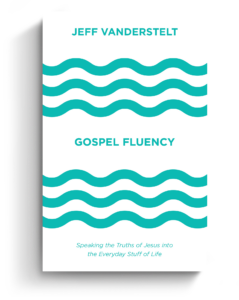When Inside Out released in 2015, it represented the best of Pixar: gorgeous animation, brilliant original storytelling, and layers of meaning for kids and adults alike. It was the last truly groundbreaking movie in the “peak Pixar” era. Though there are a few exceptions, much of Pixar’s output since 2015 has been underwhelming at best or annoyingly agenda-driven at worst. Recent box-office flops like Elemental launched much discussion about how Pixar lost its way.
Inside Out 2 may be a herald of Pixar’s creative recovery. It nearly matches the magic of its predecessor. For Gen Z and Alpha audiences (and their parents)—those navigating today’s “anxious generation” world with a hyperattuned (maybe overattuned) emotional vocabulary—Inside Out 2 is unsurprisingly resonant.
Yet the zeitgeist-capturing appeal of the film is also my biggest caution about it. It’s a movie of our emotionally fluent moment. But this is the same moment in which record numbers of people are mentally unwell. Our emotional fluency isn’t making us happier.
In a therapeutic culture plagued by the problems of “too in your head” anxiety and emotional overprocessing, I worry a franchise like Inside Out—for all its artistic merits—may end up drawing kids deeper into themselves when what they need is precisely the opposite.
Teen Drama Inside the Brain
Most of Inside Out 2’s action takes place inside the developing brain of Riley (voiced by Kensington Tallman), who’s now a 13-year-old hockey player about to enter high school. Puberty has brought new complexity to her inner world. The sequel introduces an array of new emotion characters, chiefly Anxiety (Maya Hawke) but also Envy, Embarrassment, and Ennui, with some brief appearances from Nostalgia.
The new “teen emotions” fight with Riley’s original, simpler emotions (Joy, Sadness, Fear, Anger, Disgust), and the plot of the film essentially explores the changing balance (or imbalance) of adolescent emotional life.
I worry a franchise like Inside Out may end up drawing kids deeper into themselves when what they need is precisely the opposite.
The antics of the emotion characters inside Riley’s head are wild and whimsical, and the film’s screenwriters have a field day rendering emotional concepts as fantasy-world geography. You can only smile when the emotion characters take a trip down a rapidly flowing “stream of consciousness,” encounter a gaping “sar-chasm,” and dodge hail-like lightbulbs during a “brain storm.” I especially enjoyed a scene in which the emotions visit the “vault” where Riley’s “dark secrets” are locked up. The creative animation styles and jokes in this sequence alone are worth the price of admission.
Reprising the voice of protagonist emotion “Joy,” Amy Poehler shines and—for me—delivers the film’s most heart-tugging moments. When Joy laments her reduced role in Riley’s adolescent life (“Maybe this is what happens when you grow up—you feel less joy”) and then reunites with her in a climactic, cathartic moment, I got emotional. It’s a truism of life that the pure joy of childhood dissipates as we age and encounter more worries, stress, and pain. But we never fully grow out of our need for joy. Inside Out 2 captures this well.
Are We Too Enchanted with Our Inner World?
As I watched (and largely enjoyed) the film, it struck me that the Inside Out franchise makes vivid what’s assumed in our modern age of authenticity. We’re enchanted less by the world outside our heads and more by the “self” we conjure from the authentically messy menagerie within.
In the Inside Out movies, “real life” outside the characters’ heads is less interesting than what’s going on inside. Riley’s inner world is a kaleidoscope of color and a carnival of amusements. Her outer world is mundane by comparison. I get that the movie is trying to specifically explore human interiority, and it does a great job of enchanting us to the wonders within.
This is something Christians can celebrate, believing as we do that we’re fearfully and wonderfully made by an intentional designer who “created [our] inmost being” (Ps. 139:13–14, NIV). Every new brain-science discovery—and there are still so many mysteries to uncover—is an opportunity to praise our magnificent Creator. Humans are wonderfully made physically, emotionally, and spiritually. Inside Out 2 may not give credit to a transcendent Creator, yet it can’t help but bear witness to the miraculous wonders of human consciousness.
Still, there’s a point when wonder about our inner life goes beyond grateful awe and approaches unhealthy obsession. Is it possible we’re living in an era that’s too aware of the emotional drama inside, too prone to jump to therapeutic “processing,” and generally too preoccupied with the self?
Abigail Shrier thinks so. Her recently released Bad Therapy presents a compelling case that a major cause of the deteriorating mental health among rising generations is that they talk so much about their mental health. Orienting our thoughts inordinately on our emotions makes us, unsurprisingly, more emotionally burdened.
Get Outside Your Head
Watching Inside Out 2, I felt compassion for Riley as a proxy for real people I know whose volatile emotional worlds loom dangerously large in their sense of identity and overarching purpose. Yet this is the fruit of contemporary expressive individualism, which has beckoned us to define ourselves on our own terms, favoring internal whims and deeply felt desires over external influences, norms, and expectations.
Inside Out 2 may not give credit to a transcendent Creator, yet it can’t help but bear witness to the miraculous wonders of human consciousness.
Perhaps the most troubling motif in Inside Out 2 is how it conceives the “sense of self” as an amalgamation of entirely self-referential beliefs. Riley’s beliefs about herself (“I’m a winner,” “I’m kind,” “I’m scared sometimes,” “I need help,” “I’m a good person,” and so on) gradually coalesce as threads wound together into her sense of self. But in the movie, it’s only “I” statements that form these belief threads.
Is this adequate? Shouldn’t our sense of self also be formed by what those closest to us (namely our parents, spouses, or close friends) can see that we can’t? Shouldn’t it include beliefs about realities and truths that are independent of us? Isn’t the concrete, bigger world outside our head a more reliable matrix of meaning for our identity than the iffy emotional meanderings within?
To have a fuller, richer, more satisfying sense of who we are, we need to get out of our heads. Matthew B. Crawford makes this argument in his excellent book The World Beyond Your Head, which makes the case that we know ourselves not primarily through self-conception but through communal situatedness, not primarily by internal reflection but by external reality. He writes,
We live in a world that has already been named by our predecessors, and was saturated with meaning before we arrived. . . . Our private experiences are founded on—would not be intelligible without—the prior disclosure of a shared world. This is the world we encounter first, as babies locked in joint attention with a caregiver. It follows that our experiences are not simply “our own.”
What’s inside us is certainly interesting, sometimes inspiring, and often helpful. But so much of what makes us who we are—and almost everything that makes us better versions of ourselves—comes from outside us.
Outside In
In Psalm 139, David is in awe not that he knows himself but that God knows him. He says “How precious to me are your thoughts, O God!” (v. 17), not “How precious to me are my thoughts.” David is deeply honest about his emotions throughout the Psalms, yet his sense of self is found not in those emotive ups and downs but in the steadiness and sovereignty of the God who formed us and knows our frame.
In an age of amorphous self-made identity, “God made me and knows me” is a far firmer foundation on which to build the self.
To be sure, emotional awareness and self-knowledge are part of a healthy identity. But so are convictions, beliefs, and worship oriented away from the self and accountable to truths far bigger than us. In the end, a healthy sense of self is formed not only from the inside out but also—and arguably more powerfully—from the outside in.
“The Most Practical and Engaging Book on Christian Living Apart from the Bible”
 “If you’re going to read just one book on Christian living and how the gospel can be applied in your life, let this be your book.”—Elisa dos Santos, Amazon reviewer.
“If you’re going to read just one book on Christian living and how the gospel can be applied in your life, let this be your book.”—Elisa dos Santos, Amazon reviewer.
In this book, seasoned church planter Jeff Vanderstelt argues that you need to become “gospel fluent”—to think about your life through the truth of the gospel and rehearse it to yourself and others.
We’re delighted to offer the Gospel Fluency: Speaking the Truths of Jesus into the Everyday Stuff of Life ebook (Crossway) to you for FREE today. Click this link to get instant access to a resource that will help you apply the gospel more confidently to every area of your life.

































